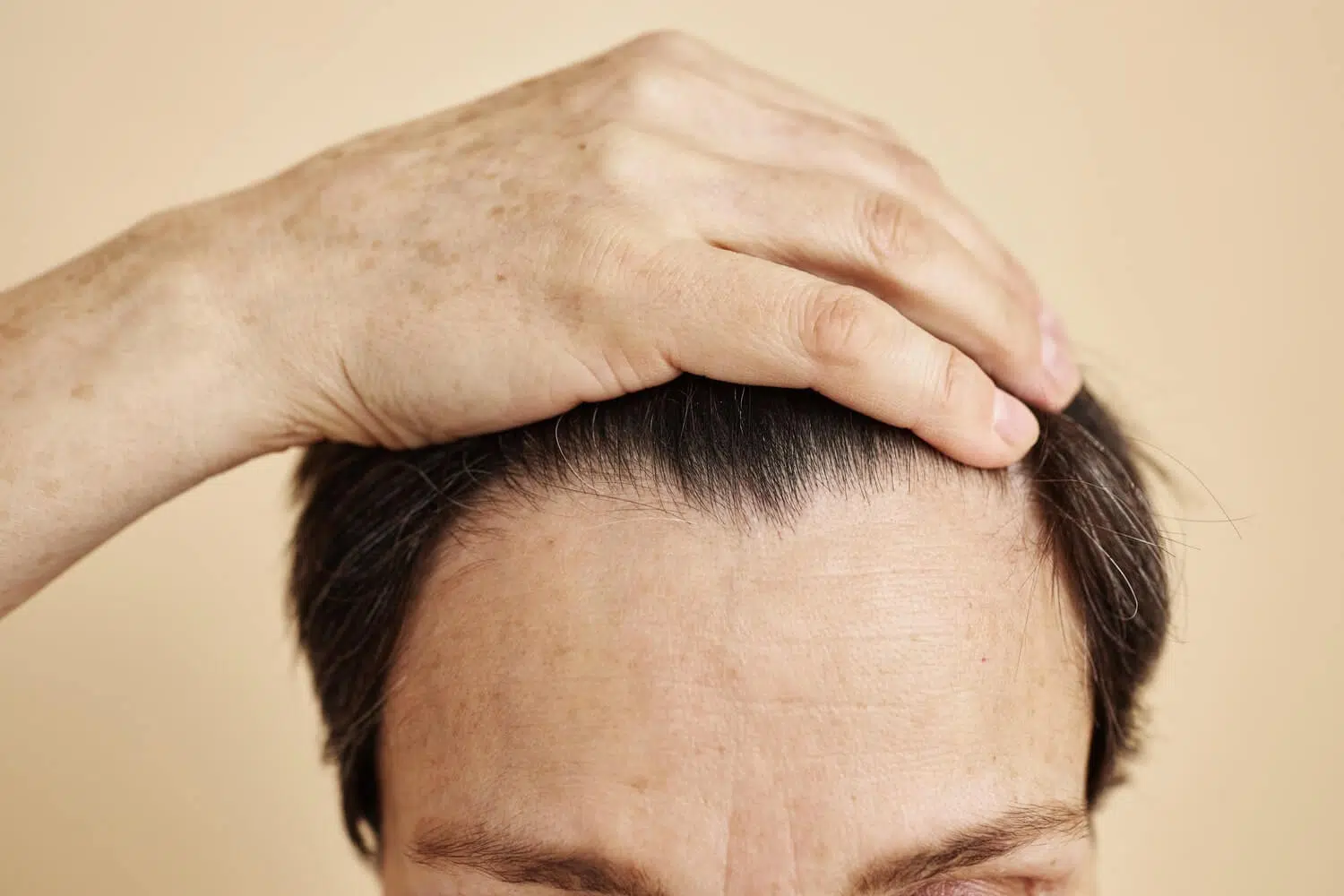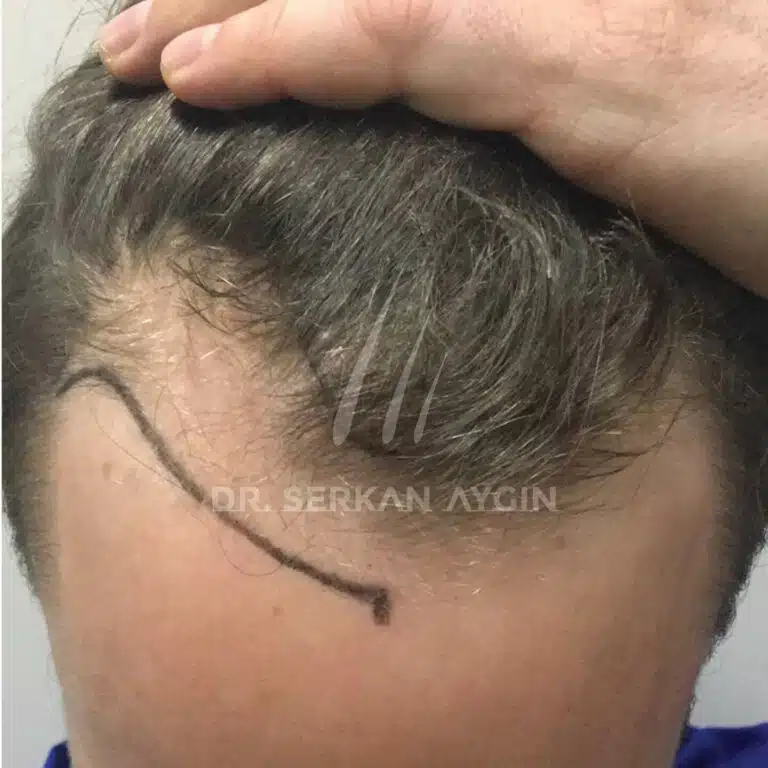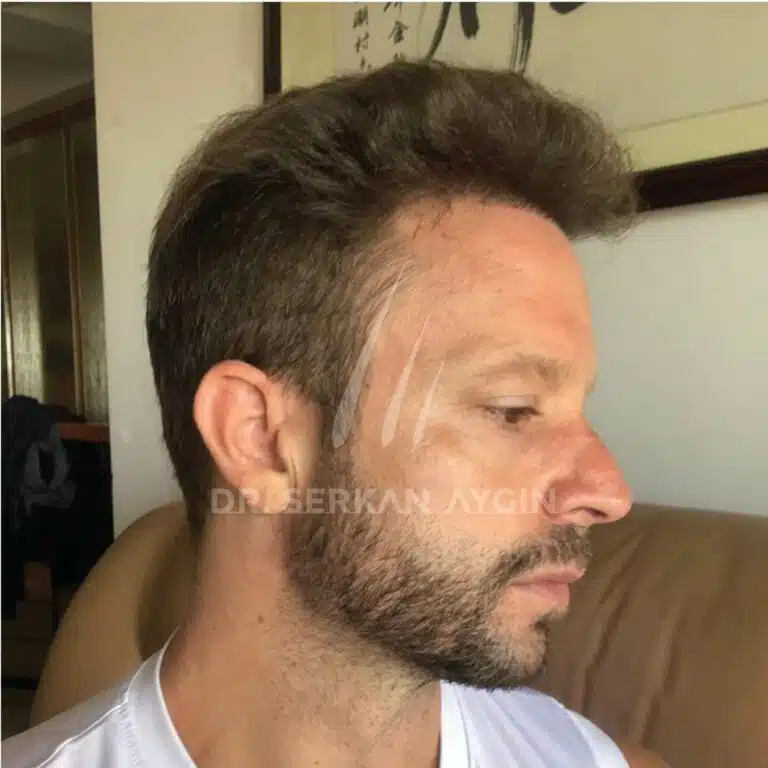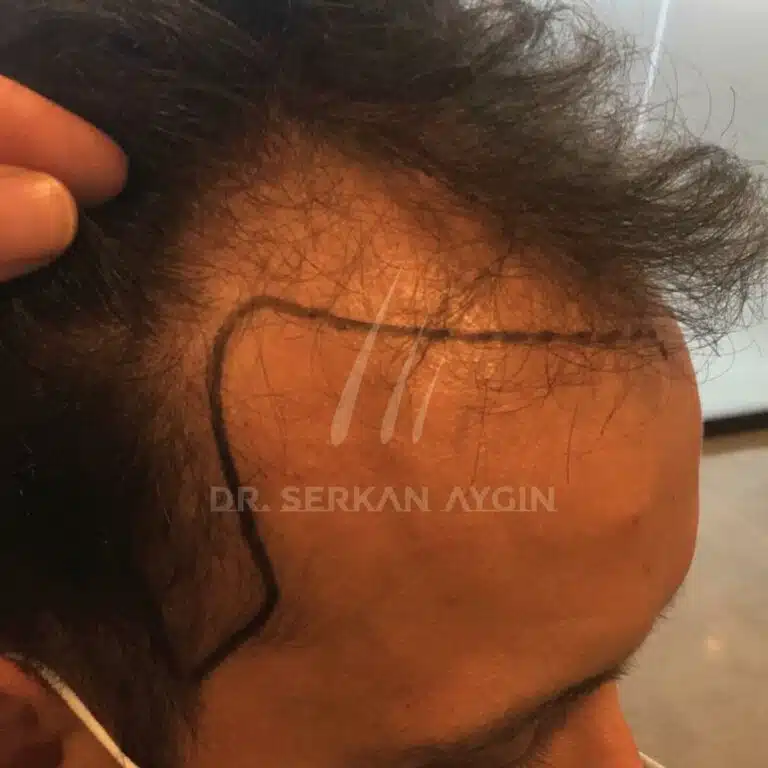A hairline transplant is a surgery to restore receding frontal hair or temples by replacing the existing hair on the back of one’s head. After the operation patients see the full results within a year. Then, this customized and lower new hairline gives a much younger look and stays there for a lifetime.
The hairline is one of the most apparent aspects of our face that is seen first. That’s why it holds a great matter. Hairline transplant surgery is a way to redefine this lost, receding, or irregular hairline to bring out your hidden beauty.
Here are the key points that you can find in this article:
- YOU CAN ACHIEVE A LOWER HAIRLINE WITH HAIRLINE TRANSPLANT
- IT IS POSSIBLE TO LOWER YOUR HAIRLINE WITH 3 COMMON HAIR TRANSPLANT TECHNIQUES
- THE HAIRLINE SHOULD BE ABOVE A CERTAIN LEVEL
- SOME CERTAIN HAIRLINE TYPES ARE EASIER TO TRANSPLANT
- AN IMPERFECTLY CREATED HAIRLINE MIGHT LOOK UNEVEN
- FOREHEAD REDUCTION IS THE BEST NEXT THING AFTER A HAIRLINE TRANSPLANT
What Can You Achieve With A Hairline Transplant?
With a hairline transplant, you can balance or lower your hairline and reflect your desired gender preferences. Here we listed everything you can get from a hairline restoration procedure.
- A LOWER HAIRLINE
- AN EVEN HAIRLINE
- ENHANCED HAIRLINE DENSITY
- MORE FEMININE HAIRLINE
- MORE MASCULINE HAIRLINE
- NATURAL LOOKING HAIRLINE
- PERMANENT RESULTS
- YOUNGER APPEARANCE
- IMPROVED SELF CONFIDENCE
- THE BEST VERSION OF YOU
What Are The Techniques Utilized For Hairline Restoration?
One of the three different methods that can be used for hairline transplantation are:
- Follicular unit extraction (FUE)
- Direct hair implantation (DHI)
- Follicular unit transplantation (FUT)
At Dr. Serkan Aygin Clinic, our preference is for the advanced FUE and DHI techniques.
What Is The Best Hair Transplant Method For Hairline Restoration?
The best method to get a hairline restoration is DHI. It can be done without shaving and leaves no visible scarring behind the back of your head. Besides, for thinning hair and indigenous hair, doctors recommend the DHI technique.
How Can It Help With Uneven Hairlines Or Widow's Peaks?
In a hairline transplant, hair grafts are evenly distributed and their angles are adjusted according to your needs. This helps you get rid of the widow’s peak and the crooked hairline you have.
Should I Get Rid Of My Widow's Peak During A Hair Transplant?
Not necessarily that you should get rid of your widow’s peak, for some people, it can be quite attractive and even a desired feature. However, if you feel like your widow’s peak is bothering you, the hairline transplant can cover your widow’s peak by creating a new hairline.
Factors To Consider Before A Hairline Transplant
Many variations are considered to affect the course of your procedure or determine if you are eligible or not. Some factors influencing your decision are:
Muscle borders:
There is a limit to how low your hair can be planted which is defined by your facial muscles.
Gender differences:
If you want a masculine hairline what you need is a straightforward direction of hairline, while for a feminine look, you need a backward one.
Hairline changes for transgender people:
Straight and angled masculine hairlines can be turned into curvy and gently transitioned feminine ones, or vice versa, but only with thorough discussion.
Hairline type:
It is crucial to identify your natural hairline while creating a new one for your needs.
Donor hair quality and quantity:
You need enough healthy donor hair to collect and transplant into your hairline.
Scarring:
The most preferred techniques like DHI and FUE leave minimal scarring after the surgery. If you opt for FUT you might expect a bigger scar.
Perfect age:
The ideal age is when you complete your hair loss pattern, which can happen any time between 25 to 75.
Medical evaluation:
If you are experiencing a skin problem, have a disease affecting your hair, or still have ongoing hair loss these can ruin your results.
How Many Grafts Do You Need For A Hairline?
You need approximately 500 to 2000 grafts for a hairline transplant. Hairline restorations usually require less than a crown coverage. However, in some cases, it can be more for some people who like to have a really low and dense hairline.
Which Receding Hairline Type Is Easier To Transplant?
No matter which hair type you have, it is possible to transplant the hair and rebuild your hairline. There are some specific features that make your surgery more convenient and reduce the surgery time, which are:
- NATURALLY LOW HAIRLINE
- STRAIGHT HAIRLINE
- MINIMALLY RECEDED TEMPLES
- LOW FOREHEAD
The Hairline Transplant Procedure
The hairline procedure begins with the consultation. You and your doctor decide on the hairline during this consultation. There are many different desired hairline styles but usually, people ask for a low, even/straight hairline to correct widows’ peak, receding, or cowlick hairline.
During the surgery day:
- YOUR DONOR AND RECIPIENT AREAS ARE NUMBED
- THE HAIR GRAFTS ARE COLLECTED FROM THE DONOR AREA
- COLLECTED FOLLICLES ARE IMPLANTED OVER YOUR HAIRLINE
In every follicle inserted over the temple and above your forehead, doctors take great care. They take guidance from your existing hair to make them look natural. Usually preferred methods DHI or Sapphire FUE give the best natural results.
How To Achieve The Best Hairline Transplant?
To give you the best hairline that looks natural and perfectly matches your facial features doctor follows a few steps.
- Designing where the new hairline should begin
- Opening the hosting channels in the best angle for natural direction
- Giving extra care not to create any asymmetry
- Following the patient’s natural hair density for a natural transition
- Determining the perfect place for different types of follicles
- Saving 100-300 follicles to the end for final tuning
How Long Does A Hairline Transplant Last?
The results last for a lifetime. The newly made hairline is created by donor area follicles, from the healthy hairs. So, just like the hairs on the back of your head, they will not be lost and durable. The transplanted hair follicles have survival rates of over 90% up to 100%.
How Low Your Hair Can Be Transplanted?
The maximum limit is where your facial muscle begins. Although it can be way higher than what you asked for.
Usually, when you experience extensive hair loss over the forehead, it is best to keep your hairline a bit high to give a dense look. This is decided with proper consultation.
Female Hairline Transplants
It is important to achieve the perfect hairline design, especially when it comes to women. The new hairline should be natural, and enhance the female proportions and beauty of every woman differently, in a custom way.
Here are some points to achieve the perfect female hairline in a hair transplant:
- AVOID IMPLANTING ON FACIAL MUSCLES AT ALL COSTS
- SHADED TRANSITION BETWEEN FOREHEAD AND HAIRLINE
- NO HARSH HAIRLINE BEGINNING
- PERSONALIZED HAIRLINE ACCORDING TO FACIAL FEATURES, PROPORTIONS, ETHNIC BACKGROUNDS, AND PERSONAL PREFERENCE OF THE PATIENT
Why Do Women Need Hairline Transplants?
One of the hair loss expected areas for women is the hairline. Androgenetic alopecia, stress, hormonal changes, and some hair loss-related diseases may cause receding around the hairline in women. When this happens a hair transplant can recover your hairline.
Hairline Transplant Cost And Considerations
The minimum price of a hairline transplant starts at around 1,500$ going up to 39,000$ depending on many factors. The main factor here is how many grafts are used during the procedure.
All around the world, the price differs a lot due to the location, clinic, and services they offer with the hairline transplant.
Comparing Hairline Transplant Costs Across Different Techniques
In each different technique, you might see price differences depending on how many grafts you need. While the average prices differ hairline transplants performed with:
- FUE COSTS 1,500 – 16,000$
- DHI COSTS 2,000 – 28,000$
- FUT COSTS 2,500 – 39,000$
The Role Of Location: Hairline Transplants In Different Countries
Depending on the location you are planning to get your surgery done, the prices differ a lot. It is because of the cost of living in each country and the exchange differences. For example, in Turkey, the cost of living is way cheaper compared to European countries and America which is why the prices are lower while offering the same quality.
Hairline Transplants In Turkey: Price And Advantages
You can get your hairline transplanted in Turkey for fair prices at the best quality. This is thanks to the rising medical tourism sector benefits. Turkey offers lots of benefits to patients asking for plastic surgeries. In our clinic thanks to Serkan Aygın’s decades of experience in the field we offer affordable package deals.
Comparing Hairline Transplants And Other Procedures
Compared to other hair transplant procedures a hairline transplant is performed over one’s forehead. While a hairline reconstruction is a way to lower the starting point of your hair, it is not the only option. Forehead reduction surgery can give you similar results by removing skin from your forehead.
Hairline Transplant Vs. Forehead Reduction Surgery
Both aim for similar things, although they achieve the same goal in different ways. It is important to understand the differences between both procedures and make a wise decision.
With a hairline transplant:
- GAIN A NEW HAIRLINE TRANSPLANTED FROM YOUR OWN HAIR
- RECOVERY AND SEEING THE FINAL RESULTS MAY TAKE SOME TIME
- CORRECT HAIRLINE SYMMETRY OR CREATE A NEW ONE
With forehead reduction surgery:
- REMOVE A PART OF YOUR SKIN BETWEEN THE EYEBROWS AND HAIRLINE
- THERE IS ALMOST NO RECOVERY TIME AND GIVES INSTANT RESULTS
- THE SURGERY REQUIRES MUCH MORE EXPERTISE
Hairline Transplant Vs. Other Hair Restoration Areas
What you can achieve with a hairline transplant is not so different from any other hair transplant surgery. Both procedures follow similar surgical traits and implant hair grafts. The only difference here is the hairline creation. Creating a perfect hairline requires expertise and a keen eye for aesthetics.
What Could Go Wrong In A Hairline Transplant?
While the surgery’s success rate goes up to 98% for perfect results, this is only true when your surgeon is experienced and you follow the recovery guidelines perfectly. With an unsuccessful surgery, you can get:
- AN UNEVEN HAIRLINE
- TOO STRAIGHT HAIRLINE
- ARTIFICIAL LOOK
- UNMATCHING FEMININE OR MASCULINE HAIRLINE
- UNMATCHING ETHNIC FEATURES
- DOLL HAIR APPEARANCE
Recovery And Long-Term Results Of Hairline Transplant
You need to follow every instruction your doctor gives to have the perfect hairline. Once you get the surgery you leave the hospital the day you got it. No stay over needed except for rare cases.
➡️In the first week itching, bleeding, and mild pain are expected. Your doctor will prescribe medications and provide clear instructions. You might have to sleep uncomfortably for a bit. The first week is crucial for hairline transplant success.
➡️In the following months, you will experience a shock loss with your newly planted hairs. This is a normal reaction for your newly planted hairs and does not mean that the surgery failed. At 3-month mark, you might still experience some itching because of the new hair growth.
➡️A year later you should be able to see the final results of your surgery. Because of individual differences, this can take some more time for a few up to 18 months.
Hairline Care After The Surgery
Do not wear hairstyles that are too tight and make sure your clips, bands, and hair ties are loose. You can choose one of the following hairstyles to have loose hair.
- LOW BUN
- LOW PONYTAIL
- HALF TOP-KNOT
- WEAR A BANDANA
To wear a bandana you might have to wait a couple of days or a week depending on your surgery. Make sure to consult your doctor before wearing anything like a hat.
References:
(1) Ronald Shapiro, Paul Shapiro, Hairline Design and Frontal Hairline Restoration, Facial Plastic Surgery Clinics of North America, Volume 21, Issue 3, 2013, Pages 351-362, ISSN 1064-7406, ISBN 9780323186032, https://doi.org/10.1016/j.fsc.2013.06.001.
(2) Parsley WM, Perez-Meza D. Review of factors affecting the growth and survival of follicular grafts. J Cutan Aesthet Surg. 2010;3(2):69-75. doi:10.4103/0974-2077.69014
(3) Tierney Salons, 8 BEST HAIRSTYLES FOR HEALTHY HAIR: START AVOIDING DAMAGE 23 March 2022 | Hairstyles





